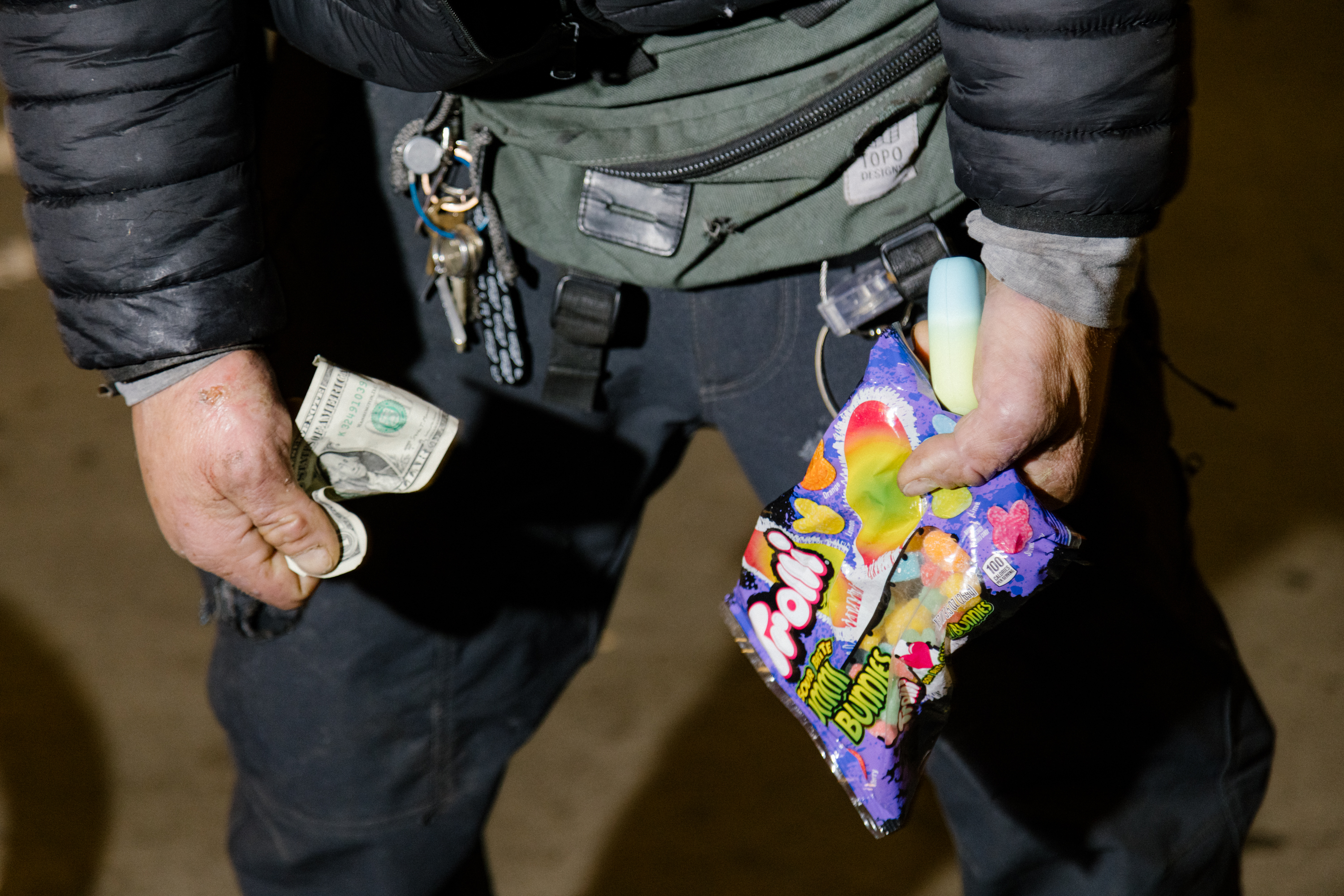A man named Dre was slumped up against a car, unable to zip up his pants and hardly able to stand as he came down from the effects of fentanyl, when The Standard found him in San Francisco’s beleaguered Tenderloin neighborhood on Thursday.
In broken phrases, he explained he’d been homeless for eight years in the city and that his son, now in the 10th grade, was growing up without a father.
“Time’s ticking. I got to get out of this shit,” he said.
Then, as if by fate, an apple fell from his tent neighbor’s bag of stolen goods and rolled toward him.
“Let me get that,” he muttered, grabbing the apple.
Without stopping to dust the dirt off its red exterior, he took a squelching bite. Juice ran down his arm, his eyes lit up, and within minutes, the apple was gone and he was reborn.
Now standing upright, pants zipped, he explained why sugar is so popular on the city’s streets.
“It fills that gap of feeling starving,” Dre said. “It puts your mind at rest.”
Candy, chocolate and ice cream were recently revealed as favorites among people who use fentanyl and other illegal drugs in San Francisco, becoming some of the most popular products at the city’s illegal street markets.
Fentanyl users told The Standard the sugar high helps them survive excruciating withdrawal symptoms. Some said they often go days without eating real food, instead surviving off Starbursts, Snickers and pints of ice cream.
However, experts say such a diet is likely worsening symptoms of mental illness experienced on the city’s streets.
Relying on sugar for sustenance can cause a person’s brain to move slower, fueling paranoia, according to Stanford University’s Shebani Sethi, an obesity physician and psychiatrist.
Sethi said she’s witnessed schizophrenic patients see a dramatic drop in hallucinations after making changes to their diet.
“What they’re eating is, unfortunately, cheap, processed and easy to get,” Sethi said. “If we treat these metabolic issues, we have an improvement in brain health.”
‘It’s like being back in bed with some ice cream’
But people using drugs on the city’s streets say sugar often serves as a lifeline.
“Candy is essential out here,” said James Hawkins, a homeless man in the Tenderloin, who said he hadn’t eaten anything in two days besides a Smuckers Uncrustables sandwich. “It sustains people.”
A bag of candy is much easier to carry than other foods. It’s easily stolen or bought for just a few bucks. Although ice cream is more difficult to store because it melts, some say it’s worth the risk because it’s just so delicious.
“It’s not melting faster than I can eat it,” said a 33-year-old woman who identified herself only as Brittany H.
“We all had a home once. It’s like being back in bed with some ice cream,” she said Friday while trying to trade Starburst candy for food and other items on Willow Street.
Francesco Leri, an addiction science researcher at Canada’s University of Guelph, said his studies have found a correlation between sugar and drug addiction.
Leri said lab mice with a taste for Oreos were more likely to enjoy cocaine than their counterparts that preferred rice cakes. He said this may point to some people having a greater desire for short-term highs like those afforded by candy and drugs.
“Prohibition doesn’t work. Candies will be sold anyway. This is big money,” Leri said. “Education is the best thing we can do.”
Leri said his own son, who is otherwise healthy and active, eats too many Oreos, causing him concern at home.
“This is what I do with my son,” Leri said. “I don’t tell him not to buy those Oreos. I try to explain to him what I know about these behaviors.”
Some homeless people told The Standard they don’t eat regularly because they’re too prideful to visit a food bank or because the free food isn’t good.
Others are simply ignoring their hunger pains because of their addictions or mental illnesses.
“Everybody has their vices, whether it’s candy, sex, drugs or whatever,” said Shauna Henry, who’s lived on and off the city’s streets since the 1980s. “Maybe we need a 12 steps for candy.”
